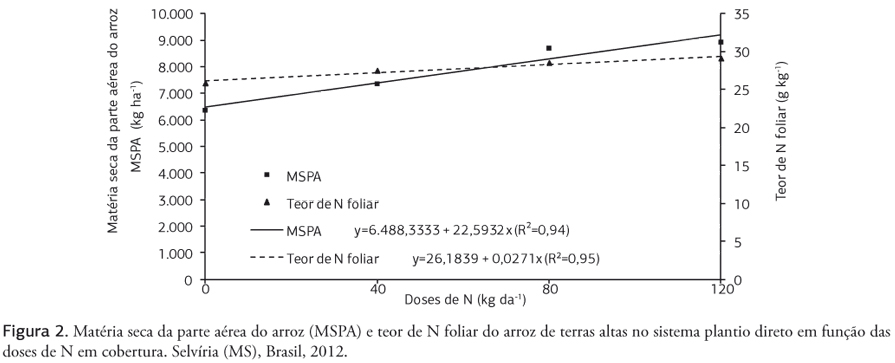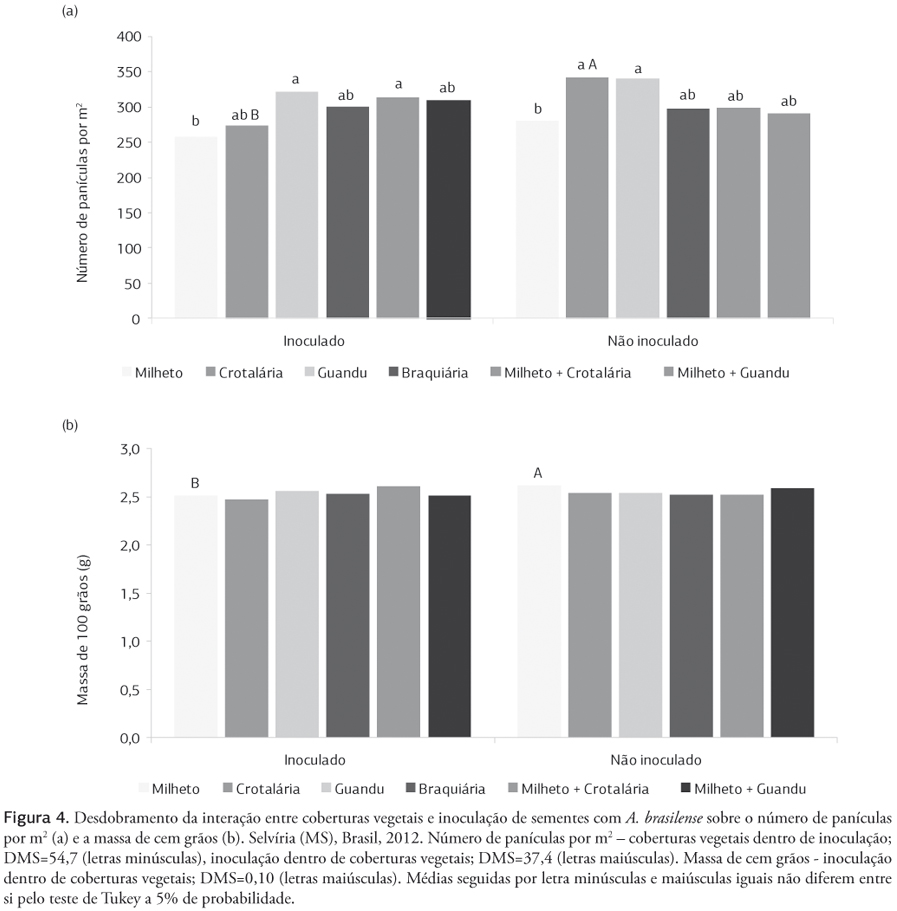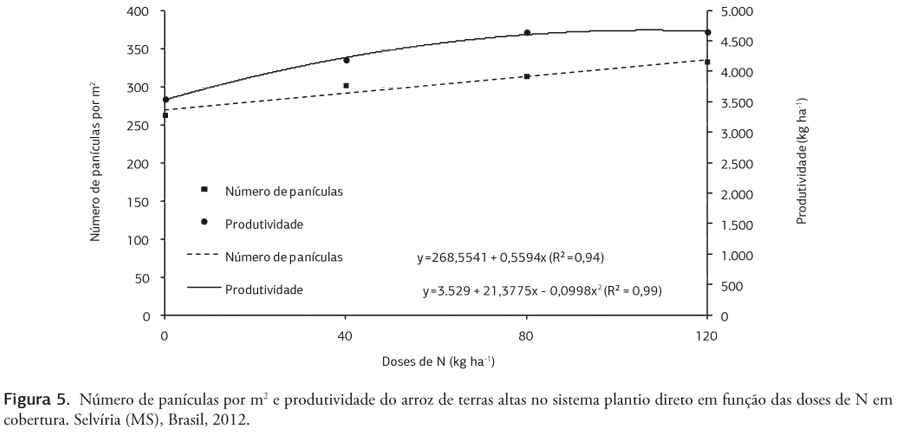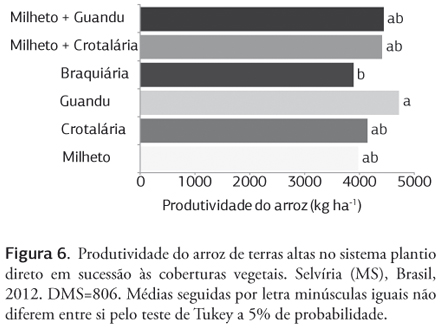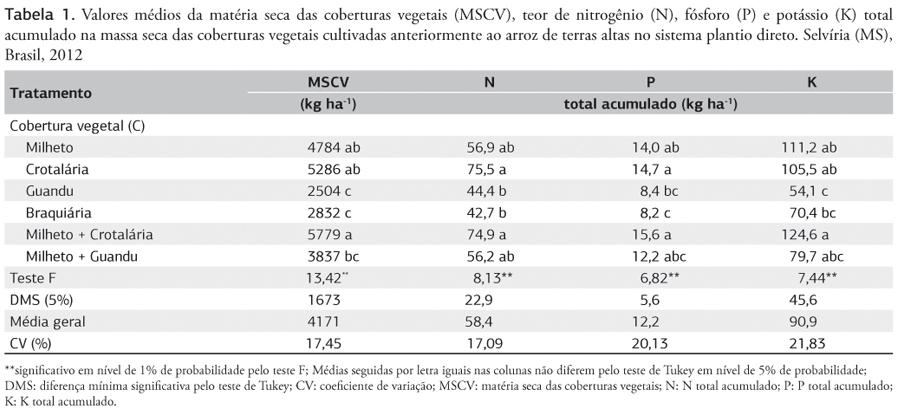Rice is an important source of energy and protein for the world population, mainly in Asia and Oceania. In Brazil, together with common beans, it is the population's basic food. Sustainable technologies that reduce rice production costs and increase productivity can warrant its supply on period of high demand. The objective of this study was to evaluate different preceding cover crops (millet [Pennisetum americanum], sunn hemp [Crotalaria juncea], pigeon pea [Cajanus cajan], Brachiaria ruziziensis, millet + sunn hemp and millet + pigeon pea), rates of nitrogen (N) fertilization at sidedressing (0, 40, 80 and 120 kg ha-1) and the effects of seed inoculation with Azospirillum brasilense in upland rice under no-tillage system on crop growth and yield. The experimental design was in complete randomized blocks, in a factorial scheme 6x4x2 with four replications. The experiment was set up on a Red Oxisol in Selvíria, State of Mato Grosso do Sul, Brazil, in 2011/2012. Pigeon pea preceding rice cropping provided higher rice yield only in comparison with B. ruziziensis. The rice yield as function of rates of N at sidedressing fit to a quadratic function. There was no influence of seeds inoculation with A. brasilense on rice yield, however, there was interaction between the inoculation and cover crops on the leaf of N content, number of panicles per m², dry rice plants and weight of 100 grains.
Crotalaria juncea; Cajanus cajan; Oryza sativa; Pennisetum americanum; diazotrophic bacteria


